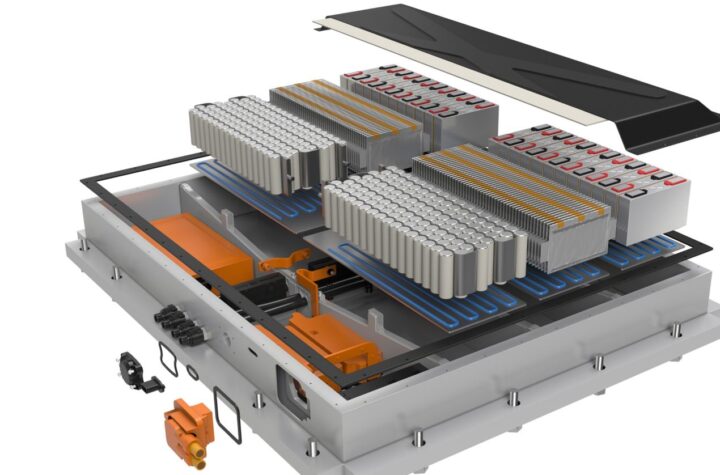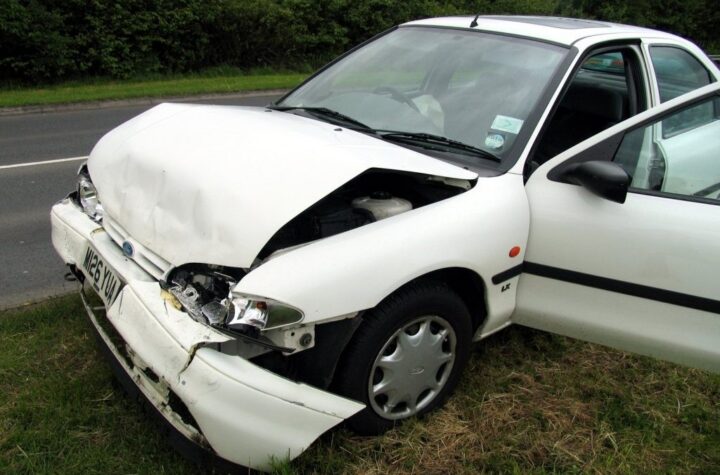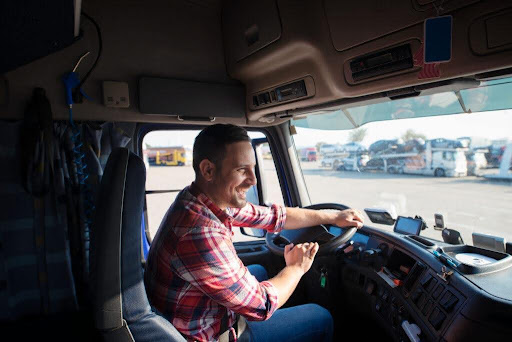
The Swedish Craft Animations AB, is one of the world’s foremost developers of real-time 3D animation technology. The company, which is less than a decade old, started out as a master thesis project. Two years ago in 2006, Craft Animations launched its products commercially. Today, the company’s flagship product range – the Craft Director Tools – simulate the behavior of cameras and 3D vehicles such as cars, helicopters, airplanes, boats and motor cycles. Companies like Toyota, Lockheed Martin and Digital Dimension, use Craft Animation’s products.
The Craft Director Tools are a series of plug-ins for Autodesk’s 3ds Max and Maya. The software is used by a wide range of companies – from Toyota to Lockheed Martin to hospitals. The Craft Director Tools are available in separate packages in three main categories – vehicles, camera tools and accessories. So for example, the vehicle package is an intuitive tool for rigging and animating vehicles with modules like 4Wheeler, 2Wheeler and Helicopter.
The company says that the Director Tools are easy to handle. In the main window the currently loaded simulations are always listed. Thanks to the configuration button you can access all simulation parameter, have the simulation re-estimated at all times or restart the simulation from any optional point in time – however, the altered animation curves of course are not saved.
Craft Director Tools are the result of several years of research into advanced neural networking, artificial intelligence and autonomous control techniques – all of which are cutting edge Swedish research. Movements are controlled and recorded with the company’s own inventions; the HYPHEN Engine™ (Hyper Physics Engine Engine™) and the Craft Razorback MoCap™ system. These inventions enable real-time based control and viewport motion capture of objects either actively controlled by a keyboard, joystick, 3D mouse (beta) and DirectX game controllers, or through fully automatic control (called Driven or Passive techniques).
Martin Enthed from Cliff Design in Göteborg, Sweden used Craft Car in his latest animation project involving the design of a new car model. He said: “Without Craft Director Tools I would have to draw out lines in 3DStudio Max to determine where the car would drive. But now I use a steering wheel and pedals just like with a computer game. I drive the car along the path I want it to follow. When I get to the end, I just press stop and I have a perfect animation! After that I can drive along the same path with another car, and I can see the car that I have just animated the whole time. This was how I made a scene with two cars racing.
“Craft Car has increased the efficiency enormously in my day-to-day work! Some of what Craft Car does can be done with script files, but that only works when the car drives along a straight path. The problem in animating cars is the issue of getting the wheels to turn correctly when the car’s speed varies, and curves are especially tricky because the outer wheels turn faster than the inner wheels. That’s why Craft Car is such a big help,” he added.
This month in December, the company decided to broaden the scope of the Craft Director Tools by broadening its FreeWare catalogue. So on December 3rd, the company announced the free light versions of Craft Director Tools which are used to introduce users of Autodesk’s 3ds Max and Maya to the benefits of the Craft Director Tools.
“The goal of Craft FreeWare is to share the same high-quality, time-saving and cost-effective animation processes previously experienced by professional users with a larger audience. By providing modified versions of Craft Director Tools, beginning animators may now take advantage of our real-time technology and gain a sense of education before graduating to the next level,” said Craft Animations’ co-founder and head of research, Luigi Tramontana.
Automotive Industries interviews Luigi Tramontana, Founder & Head of Research, Craft Animations AB
AI: What are some of the latest products you plan to showcase at IMAGINA 2009?
Firstly our Craft 4-Wheeler Extended has been upgraded with several groundbreaking enhancements. Except for all the features already in the product today we have added camber angle, improved braking, enhanced the skid brake functionalities, added a steering wheel and steering noise, improved the autonomous capabilities, enabled analog speedometer outputs, allowed for multiple animatable meshes, added tire pressure capabilities, and more.
Another announcement will be the BETA version of the very much asked for and highly advanced Craft Multi-Wheeler Industrial. This package is a result of many years of research and has been demanded by the automotive industry from the very start. Its main features are fully customizable suspension systems, multi-wheel functionalities, differential drive, gears, and also interaction with fully customizable physics environments where you can collide with other objects and other cars, things can break and so on. You can even do initial tests for concept cars, ie virtual prototyping, even though these capabilities are being much more focused on in future releases.
AI: How does Craft Animations’ 3D technology contribute to automobile design and production cycles?
As of now, instead of using mare stills, designers use the tools to very quickly make stunning animated sequences to show off their concept cars. This has been quite a problem prior to Craft since animations often become tacky whereby instead of increasing the looks and feel for the design it ridicules it. The reason for this is that it is immensely difficult to get the physics right, and when the movements are wrong our eyes tend to be very judgmental. It is actually easier to spot a faulty movement than a faulty rendering. So when the designer would show his animated design to the lead designer or a management decision group, they would unconsciously find his design faulty if the movements were faulty. The designer simply could not afford it, not to mention the fact that he would have spent days or weeks on such an animation in vain.
With Craft 4-Wheeler Extended the designer rigs his car in about 5 minutes, selects a physics preset that is appropriate for that particular design, and finally creates a real life simulation by either driving himself or letting the autopilot drive the car. He then rigs the scene with Craft Camera Tools through which he will be able catch the specific parts of the design he wishes to highlight with cinematic quality and feel, and finally he sends the clips to the render farm. Since this process is so fast and easy with Craft Director Tools he can create tons of stunning live action in just hours instead of weeks, and he does not even have to be a professional animator to succeed with it.
Our next generation of automotive industry tools are focused not only on improvements to the visual aspects, but also on the prototyping process per se. The Craft Multi-Wheeler Industrial mentioned earlier is a first step towards this broader designer workflow concept.
AI: Tell us about the concepts of hyper-physics and real-time in the 3D industry and why these concepts are so important?
Hyper-physics is an in-house concept for automatically controlled physics, ie handling the physics in an abstract layer, a so called hyper layer. The purpose of this automation is to aid a relatively inexperienced user to handle complex vehicles with ease. Usually physical processes are not easily controlled, such as flying a helicopter or an airplane or skid a car without ending up in the ditch. This is where hyper-physics, or with a more common word automatic control, comes into play.
Real-time then is a natural requirement since all our tools are based on user interaction. The user interaction aspect implies that the simulation and the automatic control of the simulation must be played back in real-time for the user to be able to interact with the simulation in real-time. That is the whole point, to interact with the simulation in real time through a layer of automatic control systems.
AI: What is the extended scope of digital mock-ups? And how has Craft Animations taken this a step further?
As mentioned there are two main reasons that designers before Craft did not venture into animating their concepts.
Firstly since it is very difficult to get a car animation to look perfectly realistic he end up risking his design by showing an animation that simply looks wrong. Secondly, if he was a master animator he would still need to spend days, instead of hours with our tools, to get it almost right, and then use film editing tools to cover the errors.
With Craft Director Tools the designer does not have these two main obstacles to overcome. He quickly rigs his concept design, drives it in the particular environment he wishes to show it, adds professional camera work to it, and his finished. Everything looks like a million dollars and he suddenly has an affordable tool to massively enhance his digital mock-ups.
AI: How will the extension of your FreeWare catalogue help designers – especially those in the automotive industry?
In our FreeWare package there is a 4-Wheeler Free with which the designer can learn how to use the Craft Workflow. He can actually create stunning animation with it as long as he doesn’t find a need for the professional features that come with the 4-Wheeler Extended tool (such as autopilot and lots of realism increasing features).












More Stories
DuPont materials science advances next generation of EV batteries at The Battery Show
How a Truck Driver Can Avoid Mistakes That Lead to Truck Accidents
Car Crash Types Explained: From Rear-End to Head-On Collisions